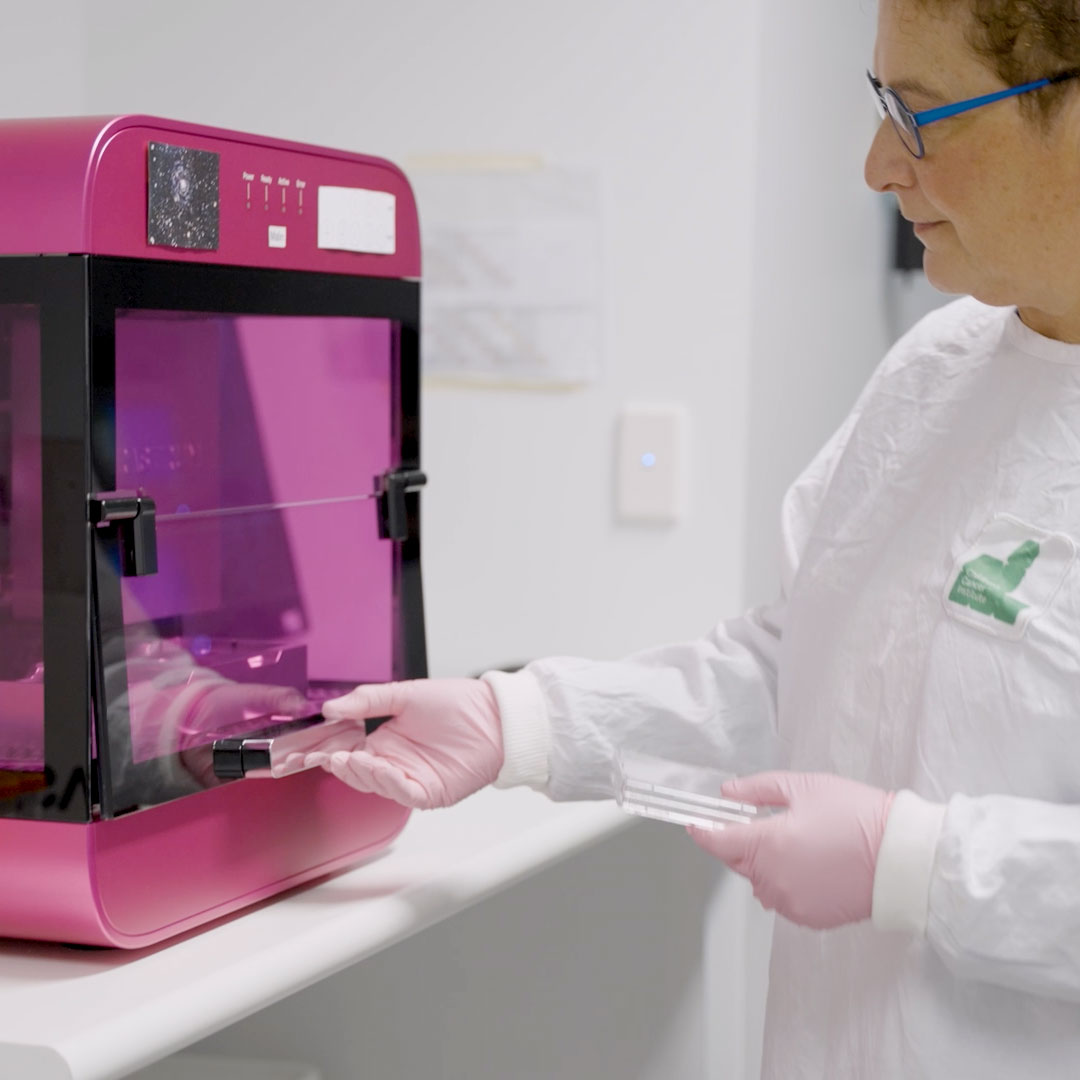First things first – what is nanomedicine? “Nano” means small, really small. One nanometre (nm) is one billionth of a metre. Nanomedicine, put simply, means using really small materials for medicine. For example, nanoparticles (20–100nm in size) can be used to deliver drugs to tumour cells and improve childhood cancer treatment.
The International Nanomedicine Conference, considered the most significant nanomedicine meeting in the southern hemisphere, is organised by the Australian Centre for NanoMedicine (ACN) and the ARC Centre of Excellence in Bio-Nano Science (CBNS). It’s an important annual event for many of our researchers.
Professor Maria Kavallaris, who heads our Tumour Biology and Targeting Program and is a co-Director of ACN, delivered a plenary lecture at this year’s meeting, in which she discussed the challenges and opportunities of precision cancer nanomedicine.

Speaking about the conference as a whole, Prof Kavallaris said,
“This conference was unique in its truly multidisciplinary nature, where it brought together biologists, clinicians, chemists, materials scientists and industry, with a focus on both the fundamental aspects of designing materials for biological applications in diagnostics and therapeutics, all the way to clinical translation. It fostered great networking and collaborations in the nanomedicine field.”
Some nano-stars of nanomedicine
One of those presenting their findings was Helen Forgham, a PhD scholar who is supervised by Team Leader Dr Joshua McCarroll and Prof Kavallaris. Helen works on a childhood brain cancer called medulloblastoma. It’s the most common malignant brain tumour of childhood, representing 20% of all childhood brain tumours, and mainly affecting children between the ages of three and eight.
Helen is testing a therapy that uses star-shaped nanoparticles to deliver gene silencing drugs (siRNA) to tumour cells.

“Ultimately, once properly investigated this therapeutic drug may prove to be successful in treating not just medulloblastoma but also a range of different brain cancers in the future.”
In collaboration with scientists (Dr John Quinn and Prof Tom Davis) from the ARC Centre of Excellence in Bio-Nano Science, Helen is testing whether these star-shaped nanoparticles can carry gene-silencing siRNAs inside medulloblastoma cells. The particular siRNA that Helen is using silences a gene that’s upregulated in medulloblastoma and promotes aggressive tumour growth.
Helen is excited by the potential of this new technology:
“Development and in-depth characterisation of the star nano-particle delivery system is a promising step forward in the search to find better treatments for patients with medulloblastoma – potentially reducing toxic side effects and providing a more targeted therapeutic strategy for treating children with aggressive disease,” she said.
“Ultimately, once properly investigated this therapeutic drug may prove to be successful in treating not just medulloblastoma but also a range of different brain cancers in the future.”
To learn more about Helen’s research, listen to her interview on ABC Radio National.
Top image: nanoparticles (labelled green) inside medulloblastoma cells















